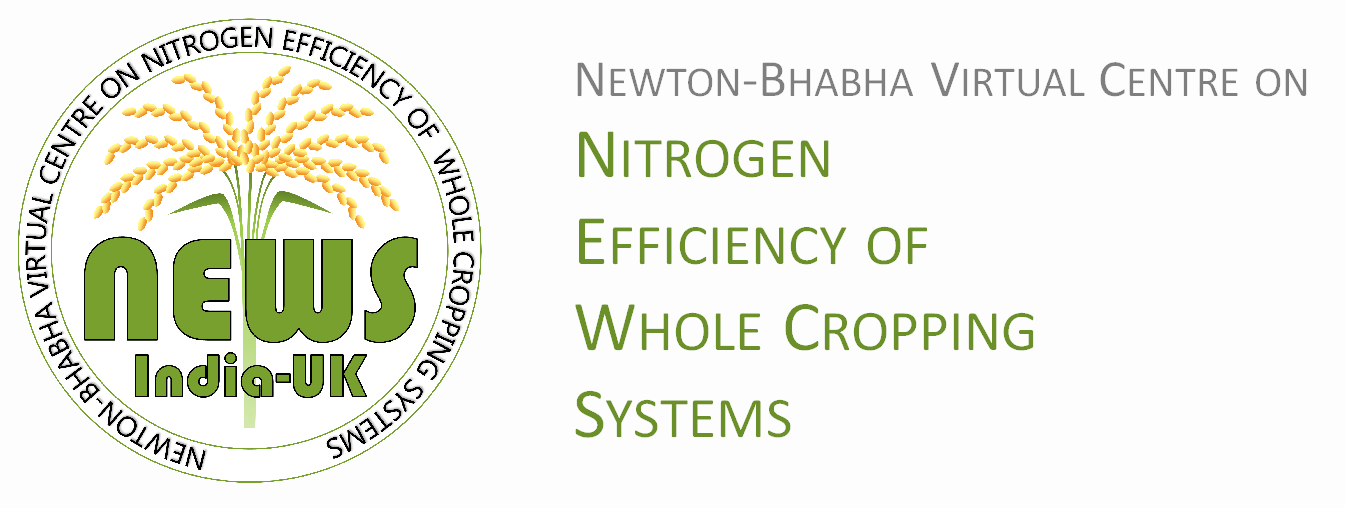Offered Topics for 2017-2018 (Application is closed)
-
Genetic mapping in rice
To include statistical analysis and bioinformatics interrogation of new data (from NEWS-India) and background data on the Rice Diversity Panel 1 or the Bengal and Assam Association Population, or other relevant data available with the Indian partners, for the purpose of identifying good candidate genes for traits especially related to grain quality such as grain ionome (e.g. arsenic, cadmium), and nutrient use efficiency such as shoot ionome (e.g. phosphorus, nitrogen).
Contact: Prof. Adam Price (University of Aberdeen), a.price@abdn.ac.uk
-
Assess rooting phenotypes in rice
Aberdeen have developed a very simple method to assess rooting depth (Al-Shugeiary et al. 2014, Annals of Applied Biology 165, 96-107). When using this method to assess hundreds of genotypes, we recommend confirming the success of the method using a rhizotron system on about 12 genotypes which allows multiple traits to be assessed. If anyone wants to learn these techniques, a visit of at least 12 weeks would be required during the Spring or Summer.
Contact: Prof. Adam Price (University of Aberdeen), a.price@abdn.ac.uk
-
Whole farm modelling of carbon sequestration and organic resource use at case study sites in India
Whole farm modelling attempts to simulate not only carbon sequestration, but also to determine the impact of carbon sequestration on crop and animal production, water use, fuel availability, labour and finances within the farm, so that the feedback of these factors on potential for carbon sequestration can be accounted for. The research fellow will start work in India by using a questionnaire to collect data on case study farms, accounting for the different sources and uses of carbon within the farming system, and determines how much carbon can be incorporated in the soil. While in the UK, the research fellow will run a model with the data collected to determine the impact of adding differently treated organic wastes to the soil; how does carbon turnover change if organic matter is added to the soil as crop residues, as manure after feeding to animals, as composted manure and crop residues, as bioslurry following anaerobic digestion to provide household energy, or as biochar following pyrolysis in a cookstove? These simulations are based on a variant of RothC. Further development of the model will be required to make it suitable to run with the crops, livestock and farming systems of India. These simulations will then be used to identify management options that can be used to increase carbon sequestration and avoid soil degradation.
Suggested length: 1 month in the UK and up to 2 months in India collecting data.
Contact: Prof. Jo Smith and Dr. Dali Nayak (University of Aberdeen), jo.smith@abdn.ac.uk
-
A systematic analysis on agronomic and environmental benefits of neem coated urea
The Indian government has made it mandatory for urea manufacturers to produce 75% to 100% of their total production of subsidised urea as neem-coated urea (NCU).The agronomic benefit of using NCU is 5 to 6% increase in yield in experimental field, the assessment in farmer’s field is yet to be realised. Neem being a natural nitrification inhibitor decreases nitrogen (N) leaching and N loss through denitrification. There have been many recent publications on impact of NCU on crop yield and nitrogen loss, but a systematic analysis of this topic is still missing. The current project aims to produce a systematic analysis on effect of NCU on N loss i.e. ammonia volatilization, leaching and denitrification, nitrogen use efficiency and crop yield. The review will also be helpful to identify the availability and gaps in experimental data required to model impact of NCU on N cycle and crop productivity.
Contact: Prof. Jo Smith and Dr. Dali Nayak (University of Aberdeen), jo.smith@abdn.ac.uk
-
Biomass pyrolysis in N management - Senior Fellowship
As part of core activities in NEWS, the potential for biomass pyrolysis in N management could be can be scoped for the Indian context. Typologies could be defined for farming systems where pyrolysis offers potential viability and greatest likely benefits to the efficiency of N use. A commercial context might be identified, as a route to eventual wide scale deployment. A set of proposals could be written to investigate specific questions that enable demonstration of biochar fertiliser products under key scenarios, also their integration into soil and farm-system models (in other NEWS activities, involving other partners and/or Fellows).
Contact: Dr. Saran Sohi (University of Edinburgh), Saran.Sohi@ed.ac.uk
-
Biochar designed for fertiliser function - Junior Fellowship
The context in which biochar use should deliver overall N benefit better than alternative options will have been defined elsewhere. In this Fellowship biochar designed for the specific fertiliser function will be manufactured at laboratory scale, as composite products of defined chemical ingredients, specific structural characteristics and ageing patterns. Optimal function will not be achieved through full factorial experiments, but constrained by shortlisting based on existing insights. Functionality under field conditions would involve later NEWS activities or initiatives within India (years 2–3). In the Fellowship indirect methods will be used: a set of laboratory assays established in Edinburgh in the past few years.
Contact: Dr. Saran Sohi (University of Edinburgh), Saran.Sohi@ed.ac.uk
-
Dynamics of N in the rhizosphere around biochar composites - Junior Fellowship
Some measures of interaction between crop roots and biochar were obtained in earlier work. In that work pure biochar particles were used. In this Fellowship, the dynamics of N in the rhizosphere around biochar composites will be examined: biochar carrying exogenous N and/or biofilms for delivery / proliferation at plant root surfaces. Mechanistic insights into N exchange at the root interface will support the modelling of biochar in the soil N cycle alongside chemical fertiliser, straw, compost and manure (etc.) in other NEWS India activities.
Contact: Dr. Saran Sohi (University of Edinburgh), Saran.Sohi@ed.ac.uk
-
Biochar application in the management of manures and/or composts - Junior Fellowship
Effects on nitrous oxide and ammonia emissions from liquid manure observed in earlier published work (in storage and after land spreading). This fellowship will examine biochar selection for use of biochar into the management of manures and/or composts for direct application to land. This will contribute to the whole-system modelling activities in NEWS.
Contact: Dr. Saran Sohi (University of Edinburgh), Saran.Sohi@ed.ac.uk
-
Testing a new micrometeorological approach for non-invasive ammonia flux measurement in field plots
The project will apply well-established chemical batch sampling methods (ALPHA samplers as developed and used widely by CEH) into a plot approach combined with inverse dispersion modelling (FIDES model, windtrax) in a grid approach as a basis to estimate ammonia emissions from replicated plots. This approach is designed to complement the existing chamber based methodology, and may also be tested along-side that approach on return to India.The fellowship is expected also to include cooperation with Dr. Benjamin Loubet of INRA Grignon, near Paris. The project will require chemical both field measurements and measurement of ammonium in the chemistry laboratory, providing training in the operation and analysis of ALPHA samplers, and also training in the application of a micrometeorological dispersion method.
Contact: Prof. Mark A. Sutton (Centre for Ecology and Hydrology), ms@ceh.ac.uk (please CC also katson@ceh.ac.uk)
-
Regional Scale Nitrogen Budgeting
One of the challenges for Component 4 of NEWS is to establish a national nitrogen budget for India. However, existing datasets are very variable across India, making this a major challenge. As part of the wider goal, it is therefore proposed to include a fellowship on developing approaches for regional nitrogen budgeting. As a junior fellowship of 3 months, the goal would be to focus on developing a nitrogen budget for a particular province, district or state of India which is data rich and can serve as an example for other areas. This can also serve to inform on the validity of different proxy approaches for a region where the primary input data are not available. The fellowship could also be modified as a shorter 1 month senior fellowship. Given that major work is currently getting under way to develop ammonia and nitrous oxide datasets, this proposed fellowship would not be expected to start until early in 2018.
Contact: Ulrike Dragosits (Centre for Ecology and Hydrology), ud@ceh.ac.uk


